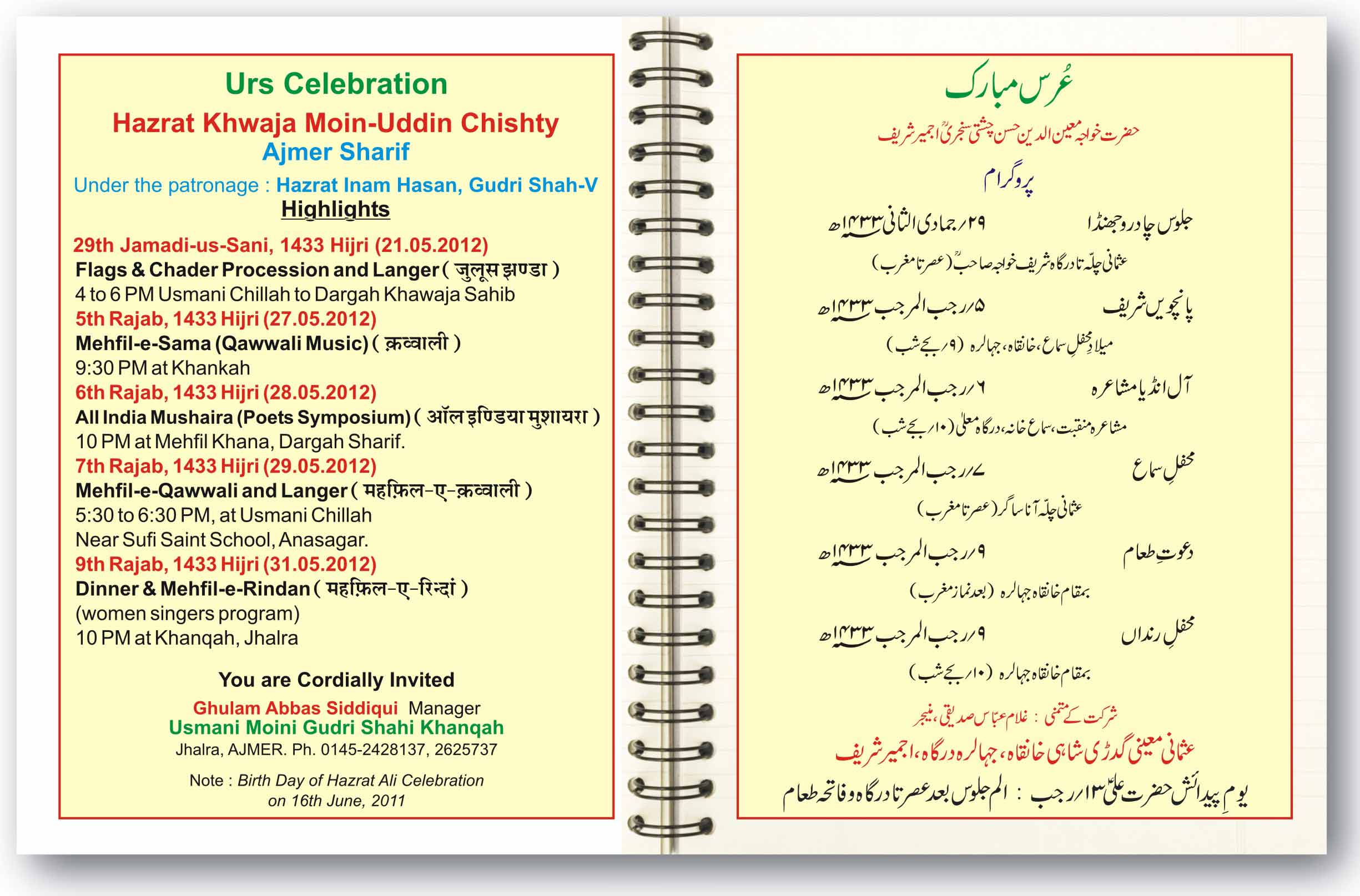
|
Hazrat Syed Malik Mohammed Alam, Saeenji Gudri Shah Baba I You may have heard it said that "God can be found by searching for him" After hearing a little of the life and search of Hazrat Syed Malik Mohammed Alam, known as Gudri Shah Baba I, you will be reassured that for a human being nothing is impossible.
Eventually the blessings of the Friend descended upon him in the words "come here". It was at the suggestion of his Murshid, Hazrat Pir Mustufa of Baghdad that he go to Ajmer. "Your spiritual share is in Ajmer at the shrine of Hazrat Khwaja Moin Uddin Hasan Chishti" Saeenji came to Ajmer and spent the remaining sixty years of his life, wearing a long jute coat and a Gudri (Patched shawl) across his shoulder. He became known as Gudri Shah, the King of Patches. This is how the Gudri Shahi Sufi Order came into existence. When Gudri Shah Baba I received the spiritual blessings of Hazrat Khwaja Moin Uddin Hasan Chishti, he became so identified with the Great Saint that those with spiritual insight were unable to separate the two, unsure as to whose manifestation they were witnessing. He has a soul relation, with Hazrat Khwaja Moin Uddin Hasan Chishti. He obtained the Uwesia Nisbat (alliance) of Hazrat Khwaja Moinuddin Hasan Chishti, and is as expressed by Hazrat Shah Wali Ullah while referring to saints, in his work, Altaf Ul Qudus; "They may be connected through their longing and anxiety or in the same spirit as Uways UI Qarni" The universality of the teachings of Gudri Shah Baba I, noble character, humility and social understanding were such that they affected everyone who came into contact with him. Men and women from all walks of life joined his holy assembly and benefited from his spiritual blessings. His concern for his mureeds can be understood from the following story. He was in the last few days of his long life and was surrounded by his mureeds, who were mainly employed in different walks of life. He enquired, "what day is it today?" They replied "Sir, it is Friday." He was so obviously thinking of the convenience of his mureeds, for whom Sunday was not a working day, when he said, in symbolic language, "Not Friday. Let it be Sunday" So, on Sunday, the 10th of Ramzan, in the year 1327 AH / 1907 AD, at the age of one hundred and twenty years, he died, proving that even death cannot take away the lovers of God without their permission. His practical teachings of love and the controlling of Nafs (Self) have warmed the heart and minds of people. He often said: Control your Nafs (The Self) and see the manife station of God. He always consoled people and was always sensitive to their feelings and needs. At times, people offered him things. He would accept and after a period of time, when he saw a person in need, he would bestow that same gift on them. He chose to be buried near the Chillah of Hazrat Khwaja Moin Uddin Hasan Chishti, overlooking Anasagar Lake, Ajmer. He had chosen this spot in his life time and now a beautiful white marble shrine marks the place of his eternal rest and his eternal relationship with Khwaja Sahib, in an area included within the premises of the Chillah Sharief of Khwaja Sahib. His shrine is a place of pilgrimage and each year on the 9th. & 10th. Ramzan (Islamic month) his Urs or death anniversary is celebrated according to the Chishti Tradition. |



















































